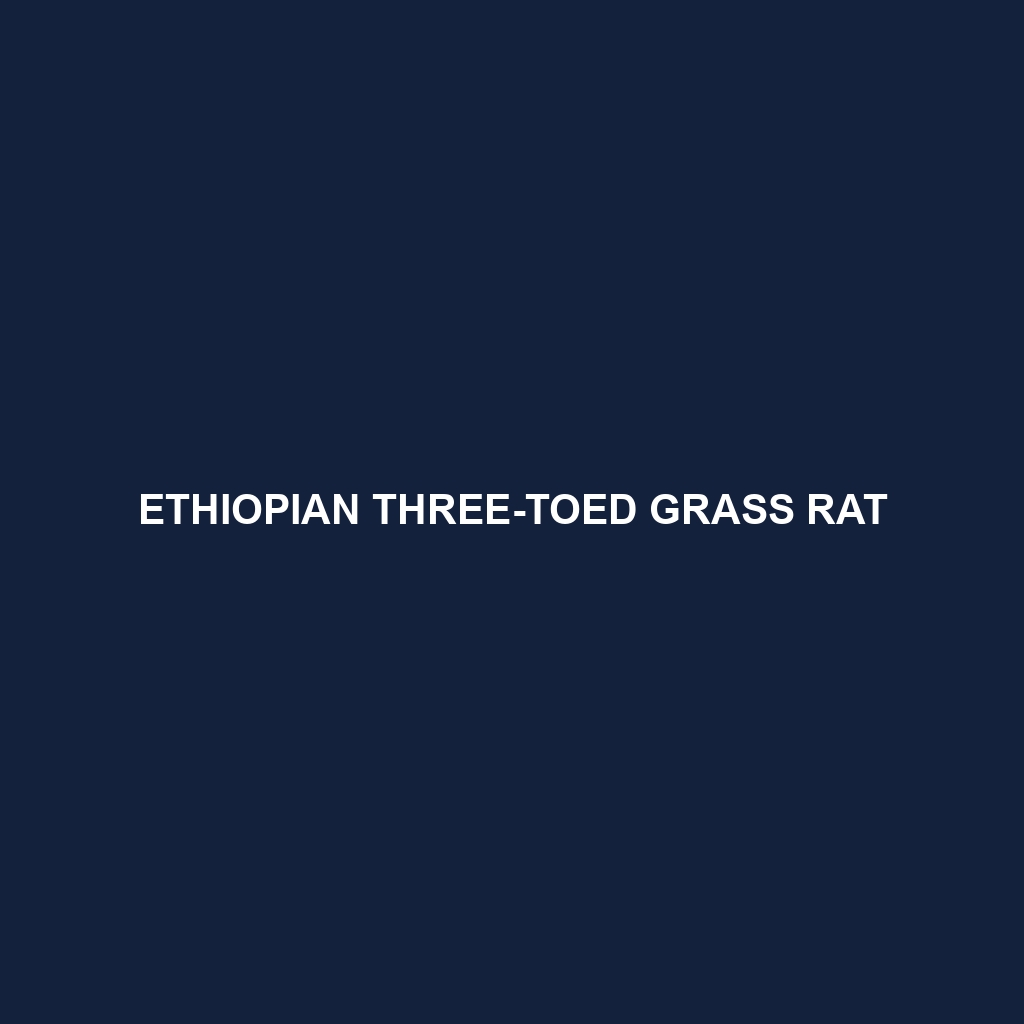Ethiopian Three-toed Grass Rat
Common Name: Ethiopian Three-toed Grass Rat
Scientific Name: Arvicanthis abyssinicus
Habitat: The Ethiopian Three-toed Grass Rat is primarily found in the highland regions of Ethiopia and parts of East Africa. This rodent prefers grasslands, savannahs, and open woodlands, thriving in areas with plentiful grasses and forbs. Their habitat choice is essential for their foraging and nesting behaviors, which are crucial for their survival.
Physical Characteristics: The Ethiopian Three-toed Grass Rat is medium-sized, typically measuring between 20 to 30 centimeters in length, excluding the tail. It features a robust body covered in coarse, sandy-colored fur, which provides excellent camouflage against its grassy environment. One distinctive feature is its three toes on each hind foot, which is uncommon among rodents and aids in its ability to navigate through dense vegetation. The large, expressive eyes and long tail further enhance its ability to evade predators.
Behavior: Primarily nocturnal, the Ethiopian Three-toed Grass Rat is known for its solitary foraging behavior. It constructs burrows in the ground to hide from predators and to create a safe environment for resting. When threatened, it exhibits alertness and quick movements, and can even climb to lower branches in search of safety. Additionally, this species engages in social grooming to strengthen bonds when sharing burrows.
Diet: The Ethiopian Three-toed Grass Rat is herbivorous, feeding on a variety of grasses, seeds, and roots. It showcases a preference for tender shoots and high-protein seeds, making it an important consumer in its ecosystem. Their feeding habits not only impact their survival but also influence the vegetation structure and nutrient cycling within their habitat.
Reproduction: Breeding typically occurs during the rainy season, which coincides with the availability of food resources. The female Ethiopian Three-toed Grass Rat gives birth to 4 to 7 pups after a gestation period of around 21 days. The young are weaned at about three weeks and mature rapidly, reaching reproductive age within two months. Notably, they are known for their strong maternal care, where females stay protective of their nests.
Conservation Status: Currently classified as “Least Concern” by the IUCN Red List, the Ethiopian Three-toed Grass Rat faces threats primarily from habitat destruction and agricultural expansion. However, ongoing conservation efforts are necessary to protect their natural habitats and monitor population dynamics.
Interesting Facts: The Ethiopian Three-toed Grass Rat is known for its unique locomotion on three toes, which allows it to move swiftly and quietly through thick grass. This adaptation serves as an excellent survival mechanism, enabling it to escape predators. Furthermore, it’s notable that researchers have found variations in vocalizations among different populations, which may serve as a form of communication.
Role in Ecosystem: The Ethiopian Three-toed Grass Rat plays an integral role in its ecosystem as both a herbivore and prey species. By feeding on grasses and seeds, it helps regulate plant growth and disperses seeds through its foraging activities. Additionally, it serves as a food source for larger predators, thus contributing to the biodiversity and food web stability in its habitats.
